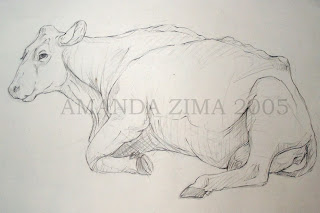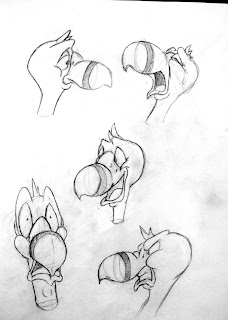Taking admission in the Top 20 Animation Colleges in the world
PORTFOLIO for FOREIGN UNIVERSITIES
If you’re planning to take admission in Animation or Design Degree studies at any of the Top 10, Top 20 or Top 100 design colleges in the world after your 10+2 (or equivalent if you belong to any other country) then do start planning early. It would usually take you at least 1-2 years of study in life art to be able to get the nod if you’re looking at Sheridan. Assuming that the requirements for admission at other leading colleges of art would be more or less similar, so you may require the same learning whether you’re trying for top-of-the-line Calarts (California), Gobelins (France), SCAD (Savannah), DAVE (Florida), RISD (Rhode), MICA (Maryland), Ringling, Carnegie Mellon (Pittsburg), SVA (NY), VANARTS (Vancouver), Seneca (Toronto), Capilano (Vancouver), MASSART (Massachusetts), USC (California), CDIA (Boston), VFS (Vancouver), MIT (Cambridge), Bournemoth (UK), or even if you try for slightly lower ranked colleges like NID (India), Utrecht (Netherlands), Emily Carr (Canada) which are in the Top 100 design colleges of the world.
We would use the Sheridan Portfolio description to understand what is required to be learnt for preparing your portfolio
At Sheridan, the components of the portfolio fall into particular streams – Life Drawing, Animation and Character Design, Storyboarding, Layout, and Personal Artwork.
I. LIFE DRAWING
1. Observational Life Drawing
3 drawings of a human figure (preferably nude, however, models wearing a swimsuit or bodysuit are acceptable. Do not draw from photographs or books.)
2. Animal Drawing
2 drawings from life of an animal figure (use pets, visit a zoo or farm)
• Any two of the above five drawings should show stillness. (e.g. the figure standing, sitting, crouching)
• Any three of the above five drawings should show the figure in motion (e.g. walking, running, pitching or batting a baseball)


3. Hand Drawing
2 freehand line drawings of a human hand
• The first should show the hand anticipating an action (e.g. about to pick up a coin, about to knock on a door, about to press a button, etc.).
• The second should show the hand carrying out that action.
Note: In the three Life Drawing sections above, all figure drawings should be drawn from life, not from books or photographs. We are more interested in you demonstrating a knowledge of structure than the ability to use shading on your drawings.

II. ANIMATION AND CHARACTER DESIGN
Design one original character to be used in the following drawings (4, 5, and 6) below.
4. Character Rotation
Draw a character rotation of your original character design using the following views. Put each view on a separate (8.5” x 11”) sheet. The sizes and proportions of each view should be consistent with the other views.
• front view
• 3/4 front view
• profile view
• 3/4 back view
• back view

5. Action Pose Sheets – 2 action poses of your original character (each pose on a separate 8.5” x 11” inch sheet). Keep these drawings rough and loose.

6. Expression Sheet – On one sheet only, draw your original character’s head with 5 different expressions (see below). Show dimension by changing the angle of the head for each expression. You may choose to draw these heads on larger paper and cut, paste and reduce if necessary to arrange all five heads on one 8.5” x 11” sheet, but you need to include the original drawings as well as the reductions.
FOR REFERENCE ONLY
• neutral (normal expression)
• angry
• happy
• sad
• surprised

III. STORYBOARDING
7. Storyboarding
Choose one of the character designs provided and using the four-panel story board show the character as it goes through the following narrative:
• Panel 1 – One of the characters finds an object.
• Panel 2 – The character shows curiosity about the object.
• Panel 3 – The character attempts to use the object to accomplish a goal.
• Panel 4 – The character reacts after the goal is…or is not… achieved.
Note: The character designs will be provided to applicants. Please remember to number your panels. It is alright to draw larger panels and then reduce them to fit the storyboard template, but you must include the original drawings as well as the reductions.

IV. LAYOUT
8. Household Objects
Create 2 composition sheets of household objects (e.g. fruit, a box, a tin can, a plastic funnel) based on these geometric forms: sphere, cube, cylinder, and cone. Do not use a ruler, compass or stencil.
• one freehand line drawing showing an accurate observation of these objects
• one freehand line drawing based on the first composition drawing (from the same point of view). Using your imagination, show how the objects would look if they were affected by some external force. This should tell us a story of what happened to the objects (e.g. a heavy wind, an earthquake, a snowfall etc.)
Note: Do not shade or colour in the artwork on the above composition sheets
9. Room Line Drawing
2 freehand line drawings of a room in your house
• The first drawing should be an accurate observation of the room and should show a person, drawn in scale, sitting, standing or reclining in that space.
• The second drawing should be the same room from that person’s point of view.
V. OTHER – PERSONAL ARTWORK
10. Personal Artwork – 5 pieces of your personal artwork
These submissions should include a variety of works that best demonstrate the range of your artistic abilities and sensibility. It can be work from high school or college courses. For example, paintings, drawings, etc. The size of any of your personal artwork must not exceed 16” x 20”. No framed work will be accepted. Please do not include three-dimensional artwork (sculpture etc.). Photographs of these works are acceptable. No video or digital media will be reviewed.
Now, the above description is totally subject to change and is used as a reference just to demonstrate the amount of work required to be done by you for pursuing a serious art career.
If you’re looking for a good place to learn life art and sketching, well Arena Chandigarh, Sec 17-C is one of the better place to learn these. Here is one of the Mini-Art Workshop outputs. Do take care to check whether any other place you identify allows you to learn these life art skills alongwith ‘live’ models? If no, then it would not serve much purpose. Copying from art books would not be a solution and may be in fact detrimental to proper art training. A good mentor is required to get you there. For a start you can try going through books like “Drawing from the right side of the Brain” by Betty Edwards or “The Natural Way to Draw” by Kimon Nicolaides.
Now see a video explaining the requrements





